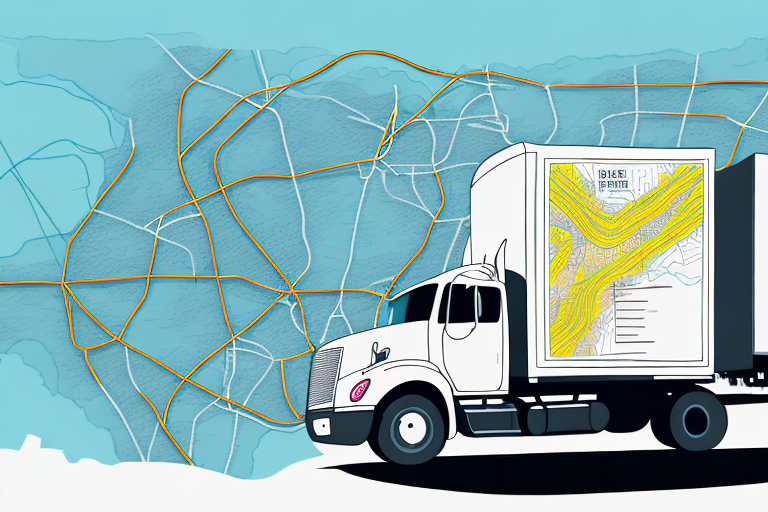How Brick-and-Mortar Stores Can Leverage Delivery Services to Increase Revenue
In today’s digital age, the expansion of delivery services has transformed consumer behavior, with many opting for the convenience and speed of online shopping. Brick-and-mortar stores are continuously seeking innovative strategies to stay competitive and increase revenue. One such strategy is leveraging delivery services. This article explores the advantages of integrating delivery services into physical retail operations and provides practical strategies for successful implementation.
The Growth of Delivery Services and Their Impact on Brick-and-Mortar Stores
Delivery services have surged in popularity over the past decade, driven by companies like Uber Eats, DoorDash, and Instacart. According to a Statista report, the U.S. online food delivery market was valued at approximately $26.5 billion in 2022, with projections reaching $40 billion by 2025. This exponential growth has significantly impacted brick-and-mortar stores, both positively and negatively.
On the positive side, partnering with delivery services allows traditional retailers to reach a broader customer base beyond their physical locations. However, the convenience of at-home deliveries has also led to decreased foot traffic in physical stores, posing challenges for businesses that have not adapted to this trend.
The Advantages of Offering Delivery Services
Incorporating delivery services offers numerous benefits for brick-and-mortar stores:
- Increased Customer Base: Delivery services attract customers who prefer shopping from the comfort of their homes or workplaces, expanding the store’s reach.
- Competitive Differentiation: Offering delivery sets a store apart from competitors that do not provide this service, enhancing its market position.
- Boosted Sales and Revenue: By reaching a wider audience, stores can experience increased sales, especially from repeat customers who value convenience.
- Cost Efficiency: Delivery services can reduce the need for large physical spaces, lowering overhead costs related to rent and utilities.
Implementing Delivery Services: Choosing Providers and Cost Analysis
Choosing the Right Delivery Service Provider
Selecting an appropriate delivery service provider is crucial for the success of your delivery operations. Factors to consider include:
- Coverage Area: Ensure the provider covers the geographic areas where your customers are located.
- Reputation: Partner with providers known for reliability and excellent customer service.
- Fees and Commissions: Compare the cost structures of different providers to ensure they align with your budget and profitability goals.
- Technology Integration: Opt for providers that offer seamless integration with your existing sales platforms and provide real-time tracking.
Cost-Benefit Analysis of Delivery Services
Before implementing delivery services, conduct a thorough cost-benefit analysis to evaluate potential profitability. Consider the following costs:
- Delivery personnel or third-party service fees
- Technology and infrastructure investments
- Marketing and promotion expenses
- Packaging materials
Weigh these costs against the expected increase in sales, customer acquisition, and retention to determine the financial viability of delivery services for your store.
Overcoming Common Challenges
Implementing delivery services may present challenges such as managing inventory, ensuring timely deliveries, and maintaining product quality. To address these issues:
- Adopt a robust inventory management system to accurately track stock levels and prevent overselling.
- Train delivery personnel thoroughly to handle products with care and adhere to delivery schedules.
- Establish clear communication channels with customers to efficiently resolve any delivery-related issues.
Promoting Your Delivery Services to Increase Sales
Effective marketing is essential to promote your delivery services and attract customers:
Marketing Strategies
- Special Promotions: Offer discounts or free delivery for first-time users to encourage trial.
- Targeted Advertising: Utilize social media and email marketing to reach specific customer segments interested in delivery options.
- Partnerships: Collaborate with local businesses and community organizations to expand your service reach and enhance brand visibility.
Customer Loyalty Programs
Implementing loyalty programs can incentivize repeat business. Examples include:
- Rewards such as free delivery after a certain number of orders
- Exclusive discounts for loyal customers
Leveraging Technology to Streamline Delivery Operations
Technology plays a pivotal role in optimizing delivery services:
- Order Management Systems: Integrate online ordering platforms with delivery services to streamline the ordering process and provide real-time status updates.
- Route Optimization Software: Utilize GPS and route planning tools to ensure efficient delivery routes, reducing delivery times and costs.
- Automated Communication: Implement automated notifications to keep customers informed about their order status, enhancing transparency and trust.
Emerging technologies like drones and autonomous vehicles are also being explored to further enhance delivery efficiency and reduce operational costs.
Providing Excellent Customer Service Through Delivery Services
Exceptional customer service is crucial for retaining customers and fostering positive brand experiences:
- Training Delivery Personnel: Ensure that delivery staff are courteous, professional, and capable of handling customer inquiries effectively.
- Accurate and Timely Deliveries: Maintain reliability by delivering orders accurately and within the promised time frame.
- Multiple Delivery Options: Offer various delivery speeds and methods, such as same-day delivery or curbside pickup, to cater to diverse customer preferences.
- Transparent Communication: Provide customers with order confirmations, tracking information, and regular updates to keep them informed throughout the delivery process.
Measuring Success: Key Metrics and Future Trends
Tracking and analyzing key performance indicators (KPIs) is essential for evaluating the effectiveness of your delivery services:
- Customer Satisfaction: Use surveys and feedback tools to gauge customer experiences and identify areas for improvement.
- Delivery Time: Monitor the average time taken to fulfill and deliver orders to ensure efficiency.
- Order Accuracy: Track the rate of correct deliveries to minimize errors and enhance customer trust.
- Cost of Delivery: Analyze expenses related to delivery operations to identify opportunities for cost reduction and increased profitability.
Stay ahead of industry trends by exploring advancements in delivery technology, such as drone deliveries and artificial intelligence-driven logistics, to continuously improve your delivery services.
Case Studies: Successful Implementations of Delivery Services
Several brick-and-mortar retailers have successfully integrated delivery services to boost their revenue and customer base:
- Walmart: Leveraged its extensive network to offer same-day delivery services, partnering with platforms like DoorDash to enhance service reach.
- Whole Foods: Incorporated delivery options through Amazon Prime, allowing customers to enjoy grocery deliveries with ease and reliability.
These success stories highlight the importance of strategic partnerships, efficient operations, and customer-centric approaches in maximizing the benefits of delivery services.
Conclusion: Why Every Brick-and-Mortar Store Should Consider Offering a Delivery Service
Integrating delivery services can significantly enhance revenue streams and expand the customer base for brick-and-mortar stores. By embracing delivery options, retailers can meet evolving consumer demands, differentiate themselves from competitors, and achieve sustainable growth in a competitive retail landscape. It is essential, however, to conduct thorough research, choose the right delivery partners, implement effective marketing strategies, and leverage technology to ensure the successful adoption and operation of delivery services.




















